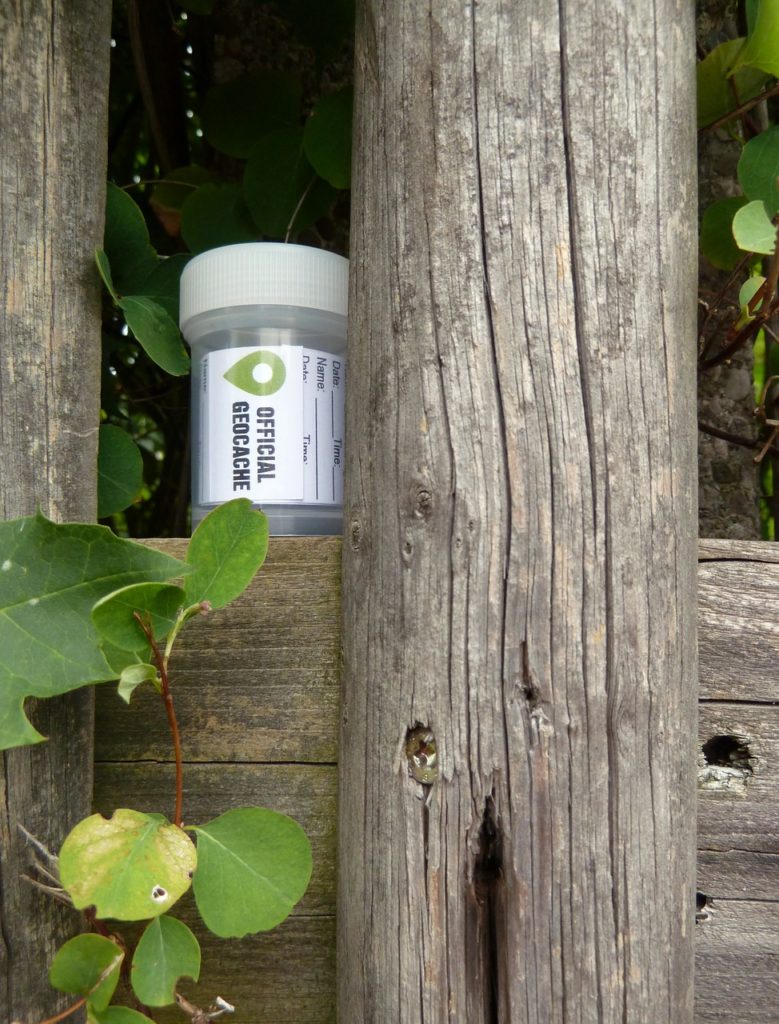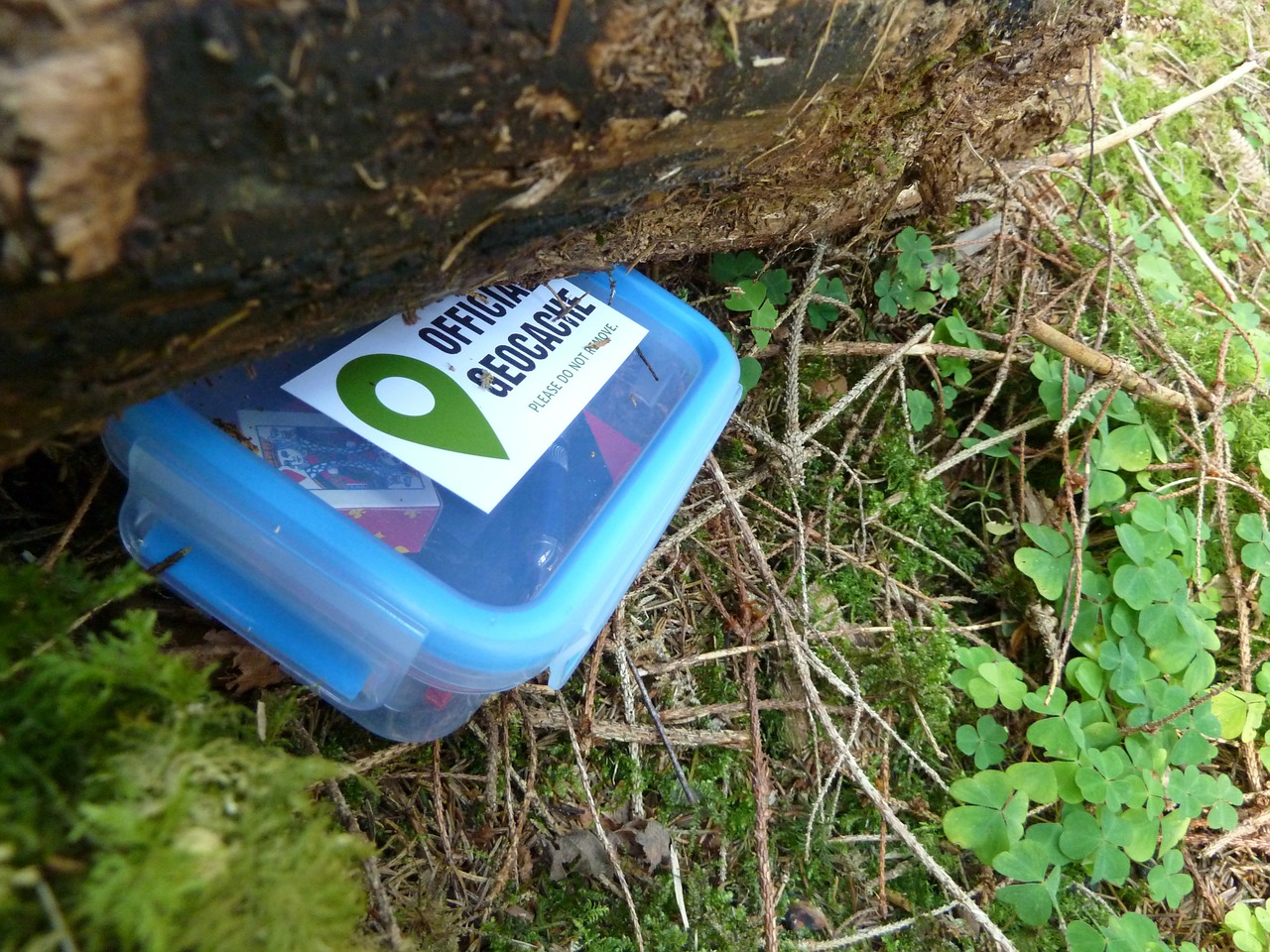Often described as “the world’s largest treasure hunt,” geocaching is a great way to get outdoors and have some fun with GPS technology. To participate in geocaching, all you really need is a GPS-enabled device like an iPhone and a profile on a site like geocaching.com (the official geocaching website). Then, simply search the website or the associated app for nearby geocaches, enter the GPS coordinates into your device, and head off on your quest!
But searching for caches isn’t the only way to get involved in geocaching: you can also put yourself on the other side of the treasure hunt equation by making your own cache for others to find. Read on for a step-by-step guide to creating, hiding, and maintaining a geocache.

Know the rules.
Not everyone realizes that officially listed geocaches must comply with some important rules and guidelines in order to ensure participant safety and protect the local environment. A full description of these hiding guidelines is available at geocaching.com: before you can hide a cache and post its coordinates, you’ll need to review these guidelines carefully and pass a short quiz to make sure you’ve correctly understood all the rules.
Choose your location.
The most important—and the most fun—part of designing a geocache is choosing where you want to hide it. Ideally, the location of your cache should be in or near to a place that people might want to visit for other reasons, like a historic site or monument or a local park. Experienced geocachers suggest that if the only reason people would come to your geocache’s location is to find the geocache, you might want to find a better place to hide it.
Make sure your location follows the rules.
If you have a location in mind for your geocache, then you need to make sure it complies with the rules and guidelines mentioned above. For example, it needs to be at least 528 feet away from any other geocaches, it must be accessible by most people, and it must have clearly indicated owner permission if it’s located on private property. In addition, you’ll want to make sure your cache’s location does not pose a danger either to the environment or to the participants who will be looking for it.
Choose a container for your cache.
Just about any type of waterproof, airtight, and durable container can make a good geocache. Military ammo boxes are very popular, but there are plenty of other options, from tupperware lunch boxes to tiny pill bottles. When choosing the size of your container, think about what you might want to put in it, as well as how hard or easy you want it to be to find.
Make your cache.
Geocaches typically contain a log book that people can write in when they find your cache, a pencil or pen (for writing in the log book), a geocaching note (which includes an official explanation of what geocaching is along with your contact information if there is a problem with the cache), and small trinkets or toys that participants can swap and trade when they find your cache. Make sure to put the logbook and the geocaching note in a plastic or ziploc bag for extra protection.
Disguise your cache.
Disguising or camouflaging your geocache is an optional step, but it’s one that’s highly recommended as it can help make your cache more challenging (and fun!) to find. If you’re hiding your cache in a tree, for example, you could glue bark or leaves to the container to help your cache blend in better with its surroundings.
Hide your cache.
 When you’re ready to hide your cache at your chosen location, make sure you place it somewhere that is a bit removed from traffic or other passersby: geocachers should be able to search for it without drawing unnecessary attention to the spot. Again, as mentioned above, do your best to anticipate and avoid any potential environmental or safety problems.
When you’re ready to hide your cache at your chosen location, make sure you place it somewhere that is a bit removed from traffic or other passersby: geocachers should be able to search for it without drawing unnecessary attention to the spot. Again, as mentioned above, do your best to anticipate and avoid any potential environmental or safety problems.
Note your geocache’s coordinates.
Once your cache is hidden, take careful note of its GPS coordinates. It’s a good idea to double-check these to make sure they’re accurate and precise, as geocachers won’t be able to find your cache if the coordinates are off.
Post your geocache.
When your cache is hidden and ready for others to find, you can submit a cache page, including GPS coordinates and any other essential information, to geocaching.com or your chosen geocaching website. Your page will be checked by a community reviewer and posted when appropriate, and then the hunt is on!
Maintain your geocache.
Don’t forget that your job doesn’t end once the geocache is hidden and its coordinates posted. As the cache’s owner, you’re responsible for ongoing maintenance: this could include moving the cache if problems develop with its location, replacing the logbook on a regular basis, and repairing the cache if it becomes damaged.

